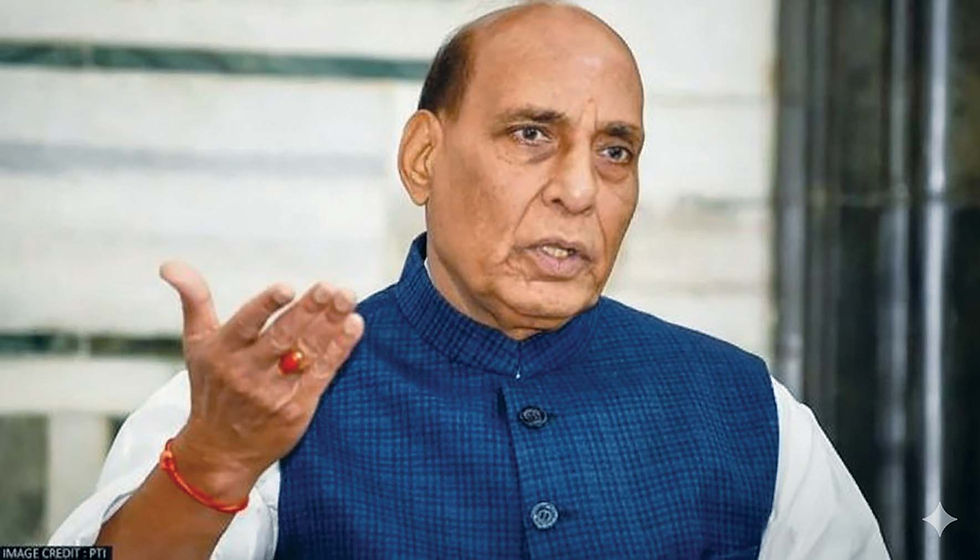Bangladesh’s Unraveling: The Silent Hand and Its Ramifications for India
- Commodore S.L. Deshmukh

- Nov 9, 2024
- 3 min read

In August 2024, the Bangladesh government led by Prime Minister Sheikh Hasina was ousted, ostensibly by mass student protests. Yet, the true story of her removal is far more complex—and insidious. Behind the façade of unrest lies the latest casualty of U.S. regime change operations, a move crafted with chilling precision. This strategy, a real-world manifestation of Sun Tzu’s dictum that “The greatest victory is that which requires no battle,” demonstrates the subtle, often invisible hand of geopolitical manipulation.
Regime change, historically, is a tactic employed by powerful nations to engineer shifts in government that align with their strategic interests. These changes—whether executed through revolution, coup, or the establishment of new ideologies—are often justified under the banner of promoting democracy, maintaining geopolitical stability, or fighting terrorism. However, the U.S., the self-proclaimed champion of democratic ideals, has repeatedly shown a penchant for supporting autocrats when it serves its interests—examples abound, from Indonesia’s Suharto to Pakistan’s Pervez Musharraf, not to mention the ambiguous role it played in the Arab Spring.
The U.S. has a long history of meddling in the internal politics of sovereign nations. Beginning with the annexation of Texas in 1846, American efforts at regime change accelerated during the Cold War and its aftermath. The U.S. carried out more than 60 such operations, often to install governments that would advance its political, economic, and military objectives. Covert methods such as economic strangulation, proxy wars, and even direct military intervention have been employed to orchestrate these shifts. The most notorious example was the CIA’s involvement in the 1953 coup in Iran that overthrew Prime Minister Mohammad Mossadegh, who had nationalized the country’s oil industry. Over the next few decades, the U.S. intervened in dozens of countries, often installing military dictatorships or puppet governments that served American interests. Latin America, in particular, saw a heavy dose of covert operations, including the U.S.-backed coup that ousted Chile’s socialist President Salvador Allende in 1973, and the creation of proxy conflicts throughout Central America.
In the 1980s, the U.S. refined its covert operations through the use of “black operations”—secret military and intelligence activities designed to destabilize regimes or provoke rebellion. These operations were frequently justified under the guise of containing communism, especially during the Cold War.
In recent years, the U.S. has refined its toolkit, incorporating “color revolutions” as a cheaper, more efficient method of destabilization. These operations, often fueled by popular uprisings stoked by local discontent, have been implemented in countries ranging from Ukraine to Venezuela, and now, Bangladesh.
Bangladesh’s recent crisis offers a case study in these tactics. At the heart of the unrest was the involvement of Nobel laureate Dr. Muhammad Yunus, who, with the backing of local political elites and U.S. operatives, became the face of the protest movement. The trigger for the unrest was the government’s handling of domestic issues, but the deeper motive was geopolitical. Sheikh Hasina’s outspoken criticism of U.S. attempts to divide Bangladesh along religious lines—and her firm opposition to the establishment of a U.S. airbase on Saint Martin’s Island—likely earned her the ire of Washington.
U.S. deep-state actors, including diplomats and intelligence agencies, appear to have played a central role in orchestrating the destabilization. This effort culminated in the installation of an interim government—a government that, as expected, is not particularly friendly towards India. The political vacuum in Bangladesh now threatens to spiral further out of control, with ongoing protests and violence, particularly against the Hindu minority, contributing to a dangerous atmosphere of uncertainty.
For India, the consequences are stark. The instability in Bangladesh could lead to a significant influx of refugees, further straining India’s borders and national security.
Already, Bangladesh has rerouted its textile exports through the Maldives, bypassing Indian ports, which has resulted in economic losses for India. On the security front, the risk of increased terrorism along the India-Bangladesh border is high, potentially destabilizing military deployments and affecting counterterrorism operations.
Moreover, the prospect of a government unfriendly to India coming to power in Bangladesh is a grim reality. This scenario could lead to diplomatic friction, particularly if Bangladesh escalates its demands for the extradition of Sheikh Hasina, who has sought refuge in India. At the same time, this situation could offer opportunities for regional adversaries—China, Pakistan, and even the U.S.—to further complicate India’s position, both diplomatically and militarily.
This convergence of challenges—a perfect storm of economic, political, and security risks—requires a comprehensive response from India. A multi-pronged strategy must be developed to counter the growing influence of the U.S.-China-Pakistan axis in the region. India must prepare for the inevitable fallout, both in terms of immediate diplomatic actions and long-term strategic planning. As Chanakya wisely counseled, “Do not reveal what you have thought upon doing, but by wise counsel keep it secret, being determined to carry it into execution.” India must heed these words as it navigates the stormy waters of a destabilized South Asia.
(The author is a retired Indian Navy officer and geo-political analyst. Views personal)





Comments